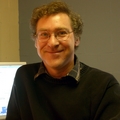Professor
 |
Contact InformationDépartement de biochimie |
.P 514 343-5849 |
Themes
How do cells work? We can pose this question in two ways first, we could ask: what is the function of a gene and second, how do genes function as ensembles. In my lab, we want to be able to test hypotheses both about how genes function and how to study their interactions at a genome-wide scale. The sequencing of some 28,000 human genes has occupied a number of labs around the world and has motivated feverish activity among biomedical researchers to understand functions of genes. However, in the absence of simple methods to establish function, these activities have not advanced significantly. We have a situation analogous to having a complete list of telephone numbers for a city, but few easy ways of linking those numbers to their owners, let alone the relationships among them. On way to define the function of a newly identified gene is to study the interactions of its product (a proteins) with proteins for which we already know their function. We have developed experimental and theoretical methods that allow us to study how proteins form complexes with each other. Our methods allow us to determine how, when and where in the cell novel proteins interact with known proteins and what are resulting phenotypes specifically associated with a new gene. We also study how groups of proteins work as ensembles to regulate decision making by the cell. We have posed the hypothesis that cells use a limited number of molecular strategies to respond to environmental signals to make decisions to divide, to differentiate into new forms or to die. We are searching for these common mechanisms, which we call « logic motifs » at a genome-wide level. We have already discovered several logic motifs that are necessary to cell survival and for which their interruptions are implicated in several diseases including cancers and diseases of development and aging. |
Publications
- Tarassov, K. Messier, V., Landry, C.R., Radinovic, S., Serna Molina, M. M., Shames, I., Malitskaya, Y., Vogel, J., Bussey, H. and S. W. Michnick (2008) An in vivo Map of the Yeast Protein Interactome Science Epub May 8.
- Stefan, E., Aquin, S., Berger, N., Landry, C., Bouvier, M., Michnick, S. W., (2007) Quantification of dynamic protein complexes using Renilla luciferase-fragment complementation applied to PKA activities in vivo. Proc Natl Acad Sci U S A, 104, 16,916-16,921.
- Michnick, S. W., Ear, P. H., Manderson, E. N., Remy, I., Stefan, E., (2007) Universal strategies in research and drug discovery based on protein-fragment complementation assays. Nature Rev Drug Discov 6, 569-582.
- MacDonald, M. L., Lamerdin, J., Owens, S., Keon, B. H., Bilter, G. K., Shang, Z., Huang, Z., Yu, H., Dias, J., Minami, T., Michnick, S. W.*, Westwick, J. K., (2006) Identifying off-target effects and hidden phenotypes of drugs in human cells. Nature Chem Biol 2, 329-337.
- Remy, I., Montmarquette, A., Michnick, S. W., (2004) PKB/Akt modulates TGF-beta signalling through a direct interaction with Smad3. Nature Cell Biol 6, 358-65.
